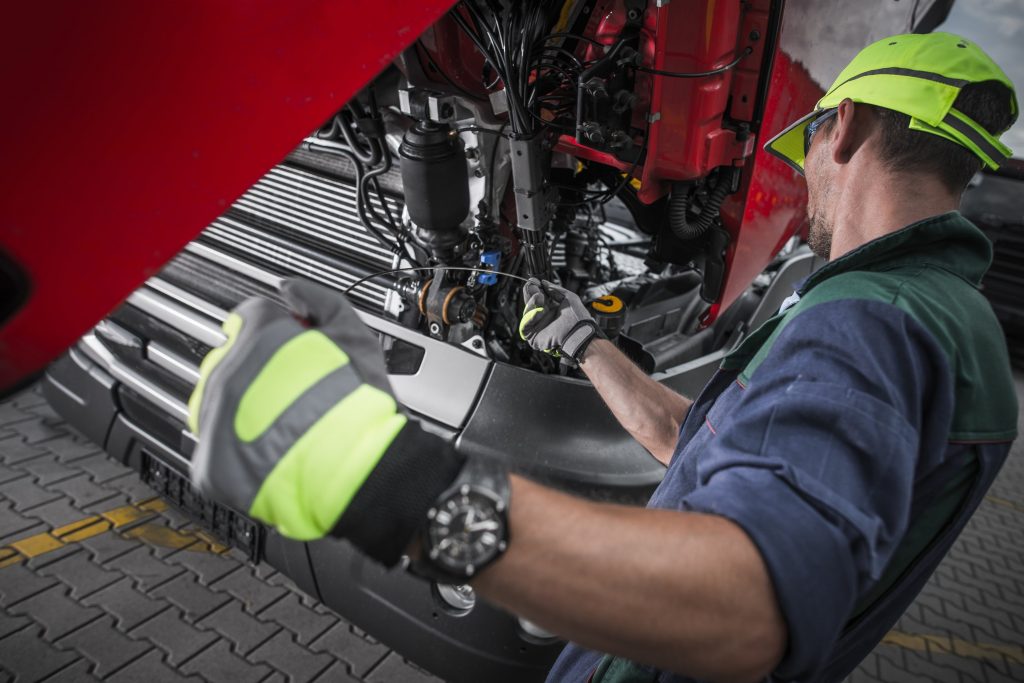Two common questions asked by fleet managers are: How can we rein in our fuel spends? and Since we can’t control prices at the pump, what can we do to operate more efficiently?
Lowering fuel costs and improving efficiency go hand in hand. Actions aimed at reducing fuel spends will eliminate inefficiencies and vice-versa. This article outlines four ways to reduce fleet costs while increasing your fleet’s overall efficiency.
It’s worth pointing out that cutting costs and boosting efficiency do not mean taking shortcuts on safety. So, every action discussed below also highlights improvements in safety.
4 actions to reduce fleet costs and increase efficiency
1. Monitor driver behavior
Sloppy driving habits can lead to excessive fuel consumption. Speeding, needless idling and inappropriate gear shifting, for example, will contribute to fuel waste. Monitoring driver behavior is therefore essential to reducing fleet costs.
With an integrated fleet management system like Webfleet, fleet managers can assess patterns in driver behavior and support actionable feedback to drivers. The OptiDrive 360 feature in Webfleet provides real-time insights on speed, coasting and other driving habits that affect fuel use. It also sends predictive alerts to drivers on the road, empowering them to immediately correct inefficient or unsafe behaviors.
Does your fleet have a driver safety program in place? Well-trained drivers are your frontline against accidents that can lead to the loss of vehicles or lives. A strong culture of safety reduces the odds of incidents, not to mention vehicle downtime, which only hamper a fleet’s efficiency. Safety brings the extra benefit of lower insurance premiums, adding to your cost savings.
2. Optimize your route planning
Higher mileage equals higher fuel costs. Productive fleets can’t avoid racking up mileage, of course. But driving unnecessary miles will burn through fuel. As will sitting in traffic. Unforeseen construction, heavy traffic and weather can all a play a role in higher fuel use, due to idling or unexpected detours.
Fleet managers are turning to digital tools to sidestep these issues. As a complete telematics and software solution, Webfleet makes it easy to analyze live traffic and weather data. These insights help fleet managers provide better on-road support for drivers, who can then bypass traffic jams or unsafe driving conditions.
From the Webfleet dashboard, you can readily figure out whether your trucks meet height and weight restrictions for certain roads. Keeping your trucks on appropriate roads translates into preventing the costly consequences of bridge strikes, safety incidents and delays. Plus, you save fuel by not having to backtrack or take long detours.
Optimized route planning enables you to deliver more, faster. With a tool like Webfleet, fleet managers can provide reliable ETAs to customers, leading to greater satisfaction and stronger business relationships.

3. Practice predictive tire management
Roughly 20% of commercial tires on the road are significantly underinflated. Slow leaks and improper tire pressure results in a 2.5% increase in fuel use. Regularly checking tire conditions is an effective way to save fuel and reduce fleet costs. Predictive tire management is also an efficiency booster. By keeping tires in optimal condition, you prevent unexpected repairs and vehicle downtime. Well-maintained tires are about safety too—blowouts and roadside breakdowns jeopardize truck and car drivers alike.
The question is, how can you determine how every single tire in your fleet is performing? Webfleet’s Tire Pressure Monitoring System (TPMS) takes out the guesswork with real-time checks on tire pressure and temperature. TPMS notifies you about abnormal pressure or temperature levels, enabling you to address issues before they lead to downtime or safety issues.
Choosing the right tires can also help you reduce fleet costs. Rolling resistance and mileage performance influence your fuel costs. Using the Webfleet fleet management solution, you can track data related to your vehicle routes and stops. This data can then be analysed to help you decide whether you’re using the most suitable tires for any given vehicle in your fleet.
4. Schedule in maintenance
Properly maintained vehicles last longer and run better. When kept in top shape, vehicles use fuel far more efficiently. Maintenance issues that go unnoticed or put off will eventually result in breakdowns and potentially higher repair costs. By regularly scheduling in maintenance, you put a stop to productivity losses. You also beef up your bottom line with savings on fuel and repairs.
Providing excellent customer service requires on-time delivery. Downtime from incidents or unplanned repairs can cause service delays, alongside penalties from broken SLAs. Roadworthy trucks are the backbone of a fleet’s profitability.
Cared-for vehicles help protect all drivers from safety incidents. Should an accident prove to be caused by a poorly maintained vehicle, your business would be liable for any material damage or loss of life. Webfleet simplifies vehicle maintenance scheduling. Your business benefits by contributing to safer roads while avoiding fines and reputational damage.

Reduce fleet costs with Webfleet
Thinking of switching from spreadsheets to a fleet management platform to reduce fleet costs? There are several variables to consider, including fleet size and vehicle type. Use our Solutions Advisor.
to see which combination of Webfleet tools is right for your unique fleet management needs.
Wondering how much an integrated platform can shave off your budget sheet? Get an answer in seconds with our Savings Calculator.
.








